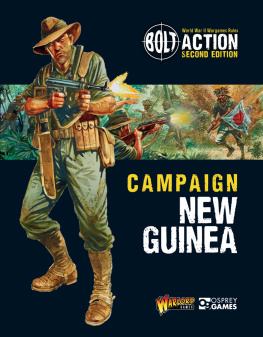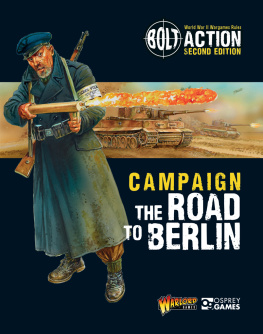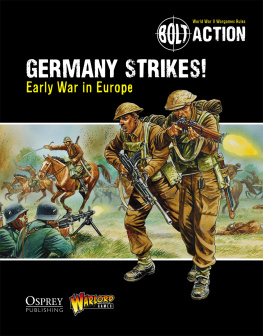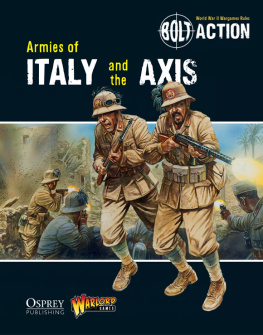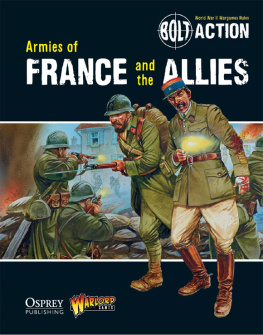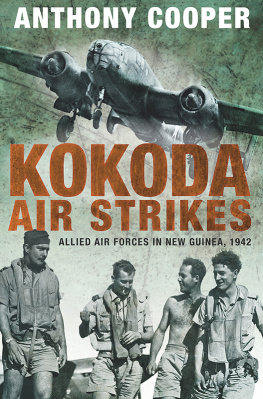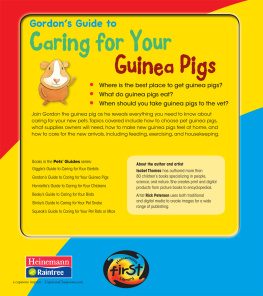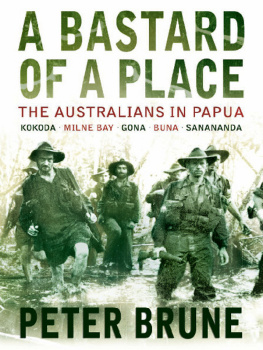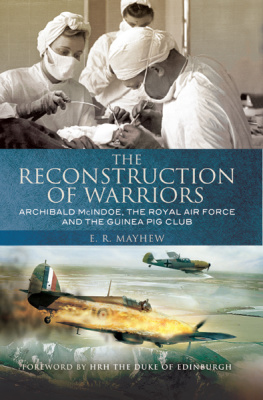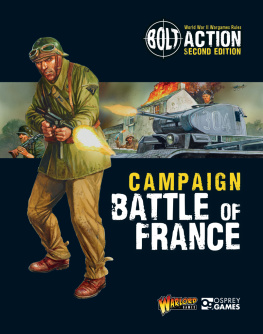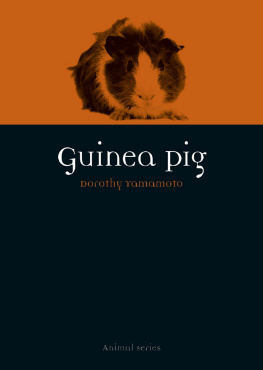
FOsprey Games, an imprint of Osprey Publishing Ltd
c/o Bloomsbury Publishing Plc
PO Box 883, Oxford, OX1 9PL, UK
Or
c/o Bloomsbury Publishing Inc.
1385 Broadway, 5th Floor, New York, NY 10018
E-mail:
www.ospreygames.co.uk
This electronic edition published in 2017 by Bloomsbury Publishing Plc
OSPREY and OSPREY GAMES are trademarks of Osprey Publishing Ltd, a division of Bloomsbury Publishing Plc.
Warlord Games
The Howitt Wing, Lenton Business Centre, Lenton Boulevard, Nottingham, NG7 2BY, UK
E-mail:
For more information on Bolt Action and other products, please visit www.warlordgames.com
First published in Great Britain in 2017
2017 Osprey Publishing Ltd. and Warlord Games
All rights reserved
You may not copy, distribute, transmit, reproduce or otherwise make available this publication (or any part of it) in any form, or by any means (including without limitation electronic, digital, optical, mechanical, photocopying, printing, recording or otherwise), without the prior written permission of the publisher. Any person who does any unauthorised act in relation to this publication may be liable to criminal prosecution and civil claims for damages.
A CIP catalogue record for this book is available from the British Library.
ISBN: 978-1-4728-1789-1 (PB)
ISBN: 978-1-4728-1791-4 (eBook)
ISBN: 978-1-4728-1790-7 (ePDF)
ISBN: 978-1-4728-2387-8 (XML)
Osprey Publishing supports the Woodland Trust, the UKs leading woodland conservation charity. Between 2014 and 2018 our donations are being spent on their Centenary Woods project in the UK
To find out more about our authors and books visit www.ospreypublishing.com. Here you will find our full range of publications, as well as exclusive online content, details of forthcoming events and the option to sign up for our newsletters. You can also sign up for Osprey membership, which entitles you to a discount on purchases made through the Osprey site and access to our extensive online image archive.
CONTENTS

T his book is an expansion for Bolt Action, the 28mm scale tabletop wargame set during World War II. Whilst there is historical detail within the narrative, this volume is not a history book it is first and foremost a wargaming supplement. The team who put this book together took feedback from reviews of previous supplements and opinions from the Bolt Action community via www.warlordgames.com/forum. With this information to hand, the intention was to provide a good mixture of scenarios, new units and new rules whilst still giving some historical background for context. Some previously published rules and units have also been reprinted this is to save players the expense of buying additional books for content which is vital to this volume, but might form only a small part of other books.
The New Guinea campaign spanned several years and thousands of miles; to even attempt to summarise such a huge campaign into a book of this size is to accept that it cannot do justice to those who fought in it. Many critical battles have not been presented as scenarios in this book, merely due to the constraints of the book size and the authors wish to present a variety of very different scenarios for players. For those who are interested in a more in-depth look at the actual historical events surrounding the New Guinea campaign, a is provided.

Matilda Frog Flamethrower Tank

Japans entry into World War II saw a seemingly unstoppable advance across Allied territories in the Western Pacific and Southeast Asia. Following on from the attacks on Pearl Harbor and the Philippines in December 1941, Guam and Wake Island would quickly fall. Hong Kong, Malaya, Singapore, Burma and the Dutch East Indies would soon follow, establishing Japan as a key threat to the United States and the British Commonwealth. This, of course, is assuming one takes December 1941 as Japans entry into the war many considered it a logical continuation to the Second Sino-Japanese War, which had erupted in the summer of 1937.
Australia had declared war on Germany on 3 September 1939 and immediately set about supporting Great Britain in the Commonwealth war effort. As a result, the four combat divisions of the Australian Imperial Force were already fighting in North Africa and on the Malay Peninsula when the forces of Imperial Japan began sweeping south towards their shores. Likewise, the Royal Australian Air Forces nine squadrons and the Royal Australian Navys five cruisers were also locked in the war against Germany and Italy; only a single armoured division remained to defend the Australian mainland and they were waiting for their tanks to arrive. The defence of mainland Australia and its colonies was largely left to the Citizens Military Force, which was comprised of volunteers and national service draftees. Compared to their counterparts in the Australian Imperial Force, these soldiers had both substandard training and equipment, leading to the derogatory term of Chockos being applied to them by the men of the 2nd Australian Imperial Force (2 AIF) chocolate soldiers who would melt at the first sign of trouble. Air defence of the entire theatre fell to 29 Hudson bombers, 14 Catalina flying boats and a small number of Wirraway trainers, which would be forced to carry out the role of improvised fighters.
Less than 100 miles north of the most northerly point of mainland Australia lay New Guinea, the second largest island in the world, covering over 750,000 square kilometres. The southeast of the island the Territory of Papua became an Australian protectorate in 1906. In 1920 the northeast of the island, together with the smaller islands of New Britain, New Ireland and Bougainville (previously under German control) were assigned to Australia by the League of Nations. The west of the island was under Dutch control as Netherlands New Guinea.
Arms and armour: Japanese forces on the attack

The strategically vital island had been identified by Japanese commanders early on as both the core of a defensive perimeter to prevent any Allied attacks staged in Australia, or conversely as a staging post for an assault on mainland Australia itself. It therefore came as no surprise to the Australian defenders in January 1942 when the Japanese South Seas Force was sighted en route to New Britain and New Ireland. The stage was set for some of the bloodiest fighting in any theatre of the war, from the opening rounds of the Rabaul landings right up to the closing stages of the war in the Pacific in August 1945.
Australian forces, New Guinea, 194244: (LR) Independent Company Lieutenant, Tank driver (2/6th Armd Regt), Forward scout (7th or 9th Div), by Carlos Chagas Osprey Publishing. Taken from Elite 153: The Australian Army in World War II.

